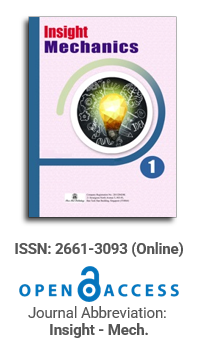Low-cost heterogeneous composite photocatalyst consisting of TiO2, kaolinite and MMT with improved mechanical strength and photocatalytic activity for industrial wastewater treatment
by Pitipanage Pasindu Bhanuka Gunarathne, Kohobhange Sujith Prasanna Karunadasa
Insight - Mechanics, Vol.6, No.1, 2023;
415 Views,
106 PDF Downloads,
0 Untitled Downloads
The industrially feasible TiO 2 -clay-based photocatalysts are essential to overcome practical barriers that are inherent to currently available TiO 2 -based photocatalysts. The current study demonstrates the fabrication of heterogeneous photocatalyst using TiO 2 , kaolinite, and montmorillonite (TKMCP), which has shown improved catalytic activity and mechanical strength, resulting in an industrially feasible photocatalyst. The TKMCP is prepared in a cost-effective manner using 60% TiO 2 and 40% clay with different kaolinite to MMT ratios (1:3 TKMCP1, 1:1 TKMCP2, and 3:1 TKMCP3) by employing mechanical compression and dehydroxylation. The clay ratio predominantly determines the TKMCP mechanical strength and photocatalytic efficiency, where the lowest MMT percentage results in a uniform matrix, in which TiO 2 particles are embedded on clay-sheets. The TKMCP surface became uniform when the MMT percentage is low, whereas a high MMT fraction results in a disordered catalytic surface due to large clay fragments and agglomerates. All three composites accounted for more than 85% of the degradation rate, exhibiting pseudo first order kinetics, resulting in high-rate constants, with the highest observed for TKMCP3, which is 1.55 h –1 . The TKMCP3 accounts for the highest mechanical strength, which is 5.83 MPa, while the lowest is observed with TKMCP1, indicating that the TKMCP strength decreases significantly with high MMT fraction. TKMCP has several advantages, including easy fabrication, low cost, free of hazardous chemicals, high production capacity with minimal machinery/supervision, non-self-degradability, easy disposal, easy installation in pilot-scale reactors, compatibility with both batch and flow reactors, environmental, and user-friendliness. TKMCP can also be obtained in variable sizes and shapes that ensure dynamic wastewater treatment applications.



 Open Access
Open Access
